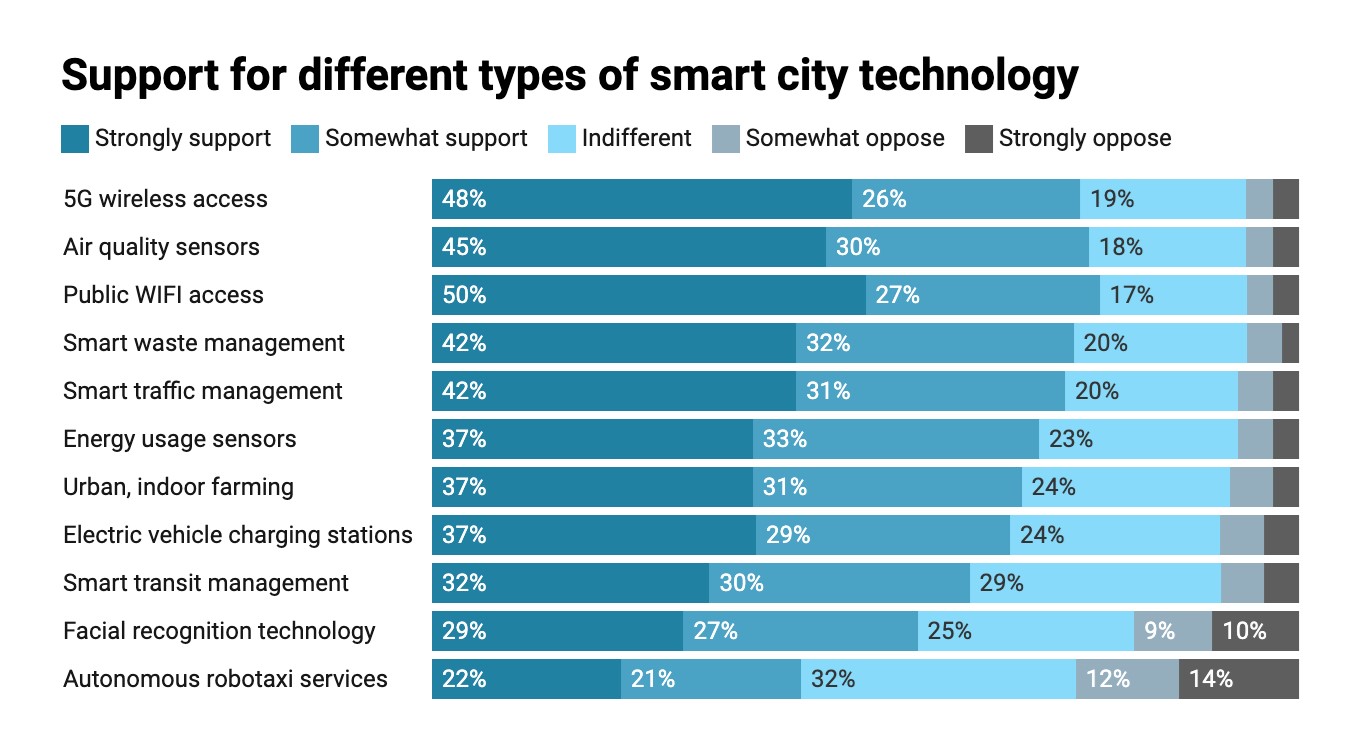By: Ray Day
CONTACT:
We wanted to share our latest consumer and business insights, based on research from The Harris Poll, a Stagwell agency.
Among the highlights of wave 141 (fielded Nov. 4-6) in our weekly consumer sentiment tracking:
ECONOMY, INFLATION WORRIES TICK BACK UP:
Today, 88% of Americans are concerned about the economy, inflation and jobs – up 2 points from last week. Worries about affording living expenses, in particular, jumped significantly.
-
- 84% worry about a potential U.S. recession (up 1 point)
- 88% about the economy and inflation (up 2 points)
- 84% about U.S. crime rates (up 2 points)
- 76% about affording their living expenses (up 4 points)
- 75% about political divisiveness (up 1 point)
- 72% about the War on Ukraine (no change)
- 59% about a new COVID-19 variant (down 3 points)
- 48% about losing their jobs (down 6 points)
- 44% about the Monkeypox outbreak (down 4 points)
AMERICANS REGRET NOT SWITCHING JOBS SOONER:
Job seekers regret not starting their job searches sooner, as layoffs and freezes in tech threaten to expand to other sectors, according to our survey with Bloomberg.
-
- 71% of those looking to switch jobs say the job search today is more complicated than anticipated.
- 63% say they’ve searched for a new job for more than six months, and 48% report applying to more than 50 positions.
- 72% of job seekers say that companies are acting like they don’t want to hire, including ignoring applications and failing to schedule interviews.
- 66% say they regret not starting the search sooner, while 63% admit it would have been easier to switch jobs a year or two ago.
- 51% of job seekers agree that, at this point, they would take nearly any job offer.
TWITTER: A TALE OF MANY VIEWS:
In light of Elon Musk’s Twitter takeover, we find both critics and fans – something brands might want to remember as they consider pausing spending on the platform, according to our survey with USA Today.
-
- Female (63%) Twitter users are less likely to support Musk’s ownership than men (70%).
- Gen Z users also are more likely to believe Musk will hurt Twitter’s product quality (53%), freedom of the press (44%) and free speech on the internet (37%) compared with older users.
- Both women (28% willing) and Gen Z (35%) would be less willing to pay a monthly subscription fee than men (44%) and Millennials (53%).
- Yet 67% of Twitter users support Musk owning Twitter, especially Republicans (79%), parents with minor children (74%), urban residents (72%), men (70%) and Millennials (70%).
- 84% of Americans find free speech on social media important, and the majority of Republicans (57%), men (56%), rural (55%) and white Americans (53%) find it “very important.”
- Frequent Twitter users, including Republicans (42% versus Democrats at 32%), Millennials (40% versus Gen Z at 26%), men (36% versus women at 26%) and Black Americans (36% versus white at 32%) say they’ll now spend more time on the platform that Musk owns it (versus all Twitter users at 31%).
AMERICANS SAY SMART CITIES DON’T NEED AUTOMOUS TAXIS:
In partnership with Emerging Tech Brew, we found that 87% of city residents found it essential for their city to invest in emerging technologies – but not every resident supports each tech initiative equally.
-
- Most intelligent city technologies – such as public WiFi access, 5G wireless access, smart traffic management, facial recognition technology and air quality sensors – has solid support from city residents. The exception is autonomous robotaxi services, which less than half support (43%).
- Overall, Gen Z and Millennial city residents report being more aware of smart city tech, as well as much more likely to use the tech weekly compared to older residents (Gen Z 44% and Millennials 51% versus Gen X 37% and Boomers 16%).
- Those in cities with metro areas of less than 1 million tend to view such tech as less critical than their larger-city counterparts.
- Smaller-city residents also are less likely to view their cities as particularly innovative, with just 16% saying they find their city very innovative, compared to 43% for larger cities.
- 48% of Boomers said they never use smart city tech, while 27% of Gen X respondents said the same.
- That compares with only 13% of Millennials and 7% of Gen Z who say they never use smart city tech.
ICYMI:
In case you missed it, check out some of the thought-leadership and happenings around Stagwell making news:
As always, if helpful, we would be happy to provide more info on any of these data or insights. Please do not hesitate to reach out.
|
|
Thank you.
Related
Articles
In the News, Press Releases, Thought Leadership
Jun 10, 2025
Stagwell (STGW) Chairman and CEO Mark Penn to Discuss the Irreplaceable Power of Human Creativity on the Main Stage of Cannes Lions

Events, In the News, Press Releases, Talent & Awards
Jun 05, 2025
Code and Theory Named ANA B2B Agency of the Year After Transforming the World’s Leading Brands

In the News, Press Releases, Talent & Awards
May 19, 2025
Stagwell (STGW) Appoints Connie Chan as Chief Growth Officer for Asia Pacific

Newsletter
Sign Up
Maggie Malek, CEO of MMI Agency and Army Veteran, and Justin Lewis, Chairman of Constellation Network and Marine Corps Veteran, Publish Open Letters for Veterans Day
NEW YORK – Nov. 10, 2022 – Stagwell (NASDAQ: STGW), the challenger network built to transform marketing, announced its support for VetsinTech (ViT), the leading national non-profit dedicated to supporting veterans through tech-based programs and opportunities in education, employment, and entrepreneurship. The partnership is led by Stagwell’s Maggie Malek, CEO of MMI Agency and Army veteran, and Justin Lewis, Constellation chairman and Marine Corps veteran.
MMI, Constellation and Stagwell are also supporting ViT’s 8th Annual Veterans Day Gala on Friday, Nov. 11, in San Francisco. The Gala is held each fall to fund educational scholarships for veterans and military spouses and to celebrate Veterans Day.
“Veteran leaders like Maggie and Justin bring invaluable experiences and skillsets to our business and we’re grateful to have their leadership,” said Stagwell Chairman and CEO Mark Penn. “We’re excited to partner with VetsinTech and open up new avenues to support veterans in building fruitful, rewarding careers within the technology ecosystem.”
Malek and Lewis have each published an open letter in recognition of Veterans Day to inspire veterans to think bigger about their futures and to encourage the creative technology community to hire veterans.
Malek, whose grandfather and uncle served in WWII and Vietnam, writes about the impact of their stories, and being fueled to be part of something bigger following a death in the family and the events of 9/11. After carving out her place as a top-performing female in the Army, she details her path of floating in and out of different jobs, maintaining internships while attending school, eventually leading to a place where she could blend her love for writing with her love of people: MMI Agency. A decade later, she became MMI’s CEO. Read Maggie’s full letter on LinkedIn here.
Lewis, who joined the Marine Corps as an insecure 17 yr. old, eventually spent six years in the Corps including being part of the force that rescued Captain Scott O’Grady from Bosnia (a story represented in the film “Behind Enemy Lines”). After bouncing around jobs, one day while delivering UPS packages he applied to a business developing websites using HTML, CSS and Javascript. After teaching himself dozens of programming languages, Lewis founded Instrument, now one of the leading digital innovation agencies. Read Justin’s full letter on LinkedIn here.
Inspired? Join Stagwell in our support for VetsinTech.
##
About VetsInTech
Based in San Francisco, with more than 70,000 vets strong and 20 chapters across the country, VetsInTech is the leading national non-profit devoted 100% to springboarding veterans into tech careers. VetsinTech harnesses the national technology ecosystem to benefit veterans returning from active military duty who want to apply their exceptional training, skills, and experience to a new technology career. Comprising technology industry leaders and former service members, VetsinTech is the only non-profit supporting our veterans through tech-based programs and opportunities in education, employment, and entrepreneurship. For more information, interested parties can visit www.vetsintech.co.
About Stagwell
Stagwell is the challenger network built to transform marketing. We deliver scaled creative performance for the world’s most ambitious brands, connecting culture-moving creativity with leading-edge technology to harmonize the art and science of marketing. Led by entrepreneurs, our 13,000+ specialists in 34+ countries are unified under a single purpose: to drive effectiveness and improve business results for their clients. Join us at www.stagwellglobal.com.
Stagwell’s fastest-growing network transforms for the convergence of creative, media, and commerce.
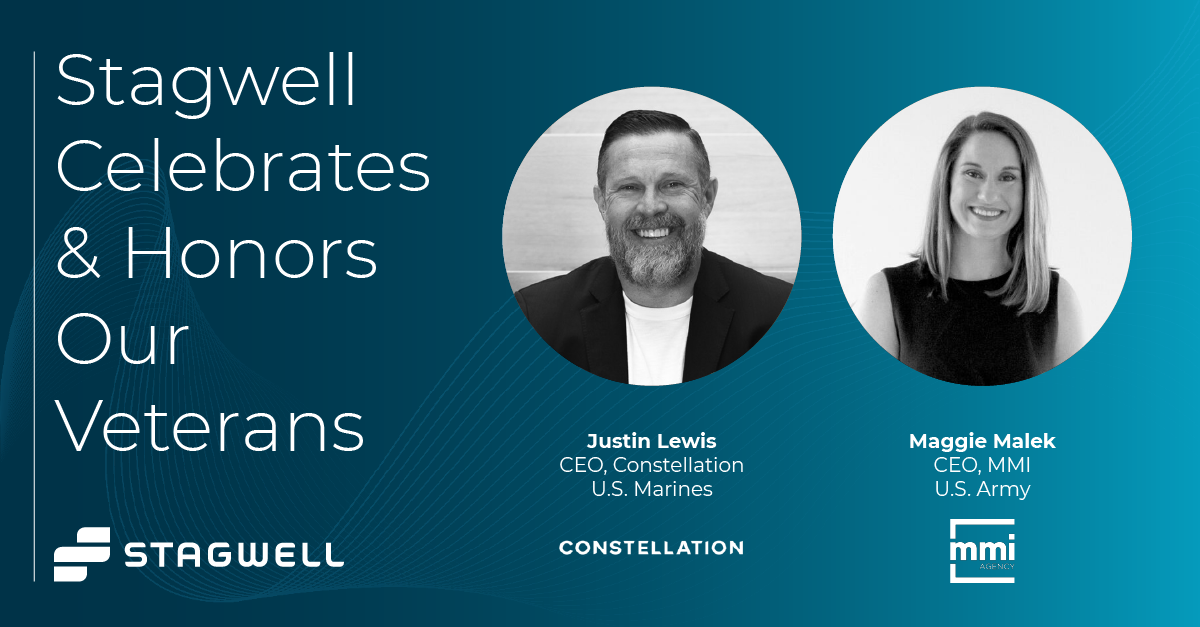
Related
Articles
In the News, Press Releases, Thought Leadership
Jun 10, 2025
Stagwell (STGW) Chairman and CEO Mark Penn to Discuss the Irreplaceable Power of Human Creativity on the Main Stage of Cannes Lions

Events, In the News, Press Releases, Talent & Awards
Jun 05, 2025
Code and Theory Named ANA B2B Agency of the Year After Transforming the World’s Leading Brands

In the News, Press Releases, Talent & Awards
May 19, 2025
Stagwell (STGW) Appoints Connie Chan as Chief Growth Officer for Asia Pacific

Newsletter
Sign Up
By: Ray Day
CONTACT:
We wanted to share our latest consumer and business insights, based on research from The Harris Poll, a Stagwell agency.
Among the highlights of wave 140 (fielded Oct. 28-Oct. 30) in our weekly consumer sentiment tracking:

ECONOMY, INFLATION WORRIES MODERATE; JOB WORRIES JUMP:
Today, 86% of Americans are concerned about the economy, inflation and jobs – down 3 points from last week. At the same time, worries about losing a job jumped significantly.
-
- 83% worry about a potential U.S. recession (down 2 points)
- 82% about U.S. crime rates (no change)
- 74% about political divisiveness (down 1 point)
- 72% about the War on Ukraine (down 2 points)
- 72% about affording their living expenses (no change)
- 62% about a new COVID-19 variant (up 1 point)
- 54% about losing their jobs (up 7 points)
- 48% about the Monkeypox outbreak (up 4 points)
INFLATION AT THE NORTH POLE:
Eight in 10 (84%) Americans plan to buy gifts for others this holiday season, and they have set their 2022 gift-giving budget at $823, according to our survey with NerdWallet.
-
- Close to a third (31%) of last year’s holiday shoppers are still in debt after using a credit card to pay for gifts they still haven’t paid off.
- 72% of this year’s holiday shoppers will use credit cards, charging $663 on average.
- Inflation is affecting how some shoppers approach gift-giving this year: 83% plan to adjust as a result of inflation, including giving different types of gifts compared to years past (36%) and spending less per person compared to years past (35%).
- 43% say they feel pressure to spend more money on holiday gifts than they’re comfortable spending.
- 68% plan to shop Black Friday/Cyber Monday sales this year.
- 50% say they’ll spend the most on gifts while shopping these sales.
- Still, 30% plan to use Black Friday/Cyber Monday sales to buy necessities for their home or family.
- 67% say they will do their holiday shopping online instead of in-store this year.
OPEN ENROLLMENT BELT-TIGHTENING:
It’s healthcare open-enrollment season, and many workers are considering downgrading their health insurance because of high inflation, according to our survey with the Nationwide Retirement Institute.
-
- 17% of respondents in the last 12 months adjusted their family’s budget to pay for health care expenses.
- 12% canceled or changed health insurance.
- 10% withdrew funds from their retirement account to pay for health care expenses.
- 8% downgraded their health insurance plan.
- 14% of Americans say they are considering downgrading their health insurance plan during this year’s open enrollment – rising to 23% for Gen Z and 20% for Millennials.
- Americans also are experiencing high levels of stress around retirement and retirement planning because of inflation: 47% report their top stressor is inflation, 30% worry about Social Security running out of funds, and 29% are concerned about an unexpected decline in their health.
EMPLOYEES’ ADVICE TO HR: LESS IS MORE:
When it comes to HR tech platforms to improve the work experience, less is more, according to our survey with HR Brew.
-
- On average, employees report using 3.4 HR platforms and 8.1 total HR and productivity tools in general.
- 69% of employees with one HR platform said they felt confident they could find the information they need.
- Confidence plummeted to 49% among those whose company has more than one HR platform.
- In today’s economic climate, employees have an appetite for financial planning solutions (80% favorability among Millennials and 72% among Gen X) and the lowest need for new social networking tools.
INTEREST IN WOMEN’S SPORTS CLIMBING:
The popularity of women’s sports has grown by leaps and bounds – and consumers want to see the trend continue, according to Stagwell’s National Research Group’s new report, Leveling the Playing Field.
-
- In the U.S., 3 in 10 sports fans say they’re watching more women’s sports now than they were five years ago.
- The broadcast market for women’s sports grew significantly worldwide this year, thanks in part to successful events like the UEFA European Women’s Championship and ICC Women’s Cricket World Cup.
- Even in the U.S., which didn’t compete in those tournaments, the market grew by 29% compared with 2021.
- 85% of fans – including 79% of men – think that it’s important for women’s sports to continue to grow in popularity.
- The Olympics proved there’s growing demand for women’s sports. During the Tokyo Games, in half of the 10 most widely viewed sports, viewership for women’s events was higher than men’s.
ICYMI:
In case you missed it, check out some of the thought-leadership and happenings around Stagwell making news:
As always, if helpful, we would be happy to provide more info on any of these data or insights. Please do not hesitate to reach out.
Related
Articles
In the News, Press Releases, Thought Leadership
Jun 10, 2025
Stagwell (STGW) Chairman and CEO Mark Penn to Discuss the Irreplaceable Power of Human Creativity on the Main Stage of Cannes Lions

Events, In the News, Press Releases, Talent & Awards
Jun 05, 2025
Code and Theory Named ANA B2B Agency of the Year After Transforming the World’s Leading Brands

In the News, Press Releases, Talent & Awards
May 19, 2025
Stagwell (STGW) Appoints Connie Chan as Chief Growth Officer for Asia Pacific

Newsletter
Sign Up
By
Connie Lin,
Fast Company
CONTACT
hello@stagwellglobal.com
SIGN UP FOR OUR INSIGHTS BLASTS
Nigeria sits at Africa’s heart: Geographically, it’s nestled middle-left of the curve in the kidney bean-shaped land mass, and its economy boasts the highest GDP on the continent (nearing $450 billion in 2021). The pulse of the country beats with the pace of rapid transformation. It harbors the world’s sixth-largest population, which is also among the fastest growing, projected to surpass the United States by 2050.
It’s a country of strivers, on the verge of reinventing itself—and it has fluxed socially and culturally in recent years. But one constant anchor is the promise of the internet in delivering a better future, reveals a new report from the National Research Group (NRG), a division of global marketing firm Stagwell.
Over the summer, NRG partnered with a media agency based in Lagos, the country’s largest city, to dive deep into the Nigeria’s shifting landscape—one that, despite its position at the heart of Africa, is still a mystery to much of the Western world (if not to the East—where it has caught the eye of economic powerhouses like China, which has poured millions into Nigerian infrastructure to cement strategic trade partnerships).
The report is the first in a series focusing on high-growth emerging markets, and draws from a June-July survey of 5,000 Nigerian consumers, ages 16 to 64, whose responses were interwoven with commentary from academics and industry experts. It sketches the portrait of a country reenergized by young blood, that has lagged on technological development in many ways, but now hopes to leapfrog into the digital race.
NEW DIGITAL NATIVES, CONNECTED BY SMARTPHONES
First and foremost, it notes: Nigeria runs on mobile technology. According to the data, 92% of people in the country own a smartphone, and the device dominates as a mode of entertainment for most. Over half (55%) of all TV shows and movies are watched on smartphones, and the vast majority (83%) of gaming is played on them as well. As NRG’s content and strategy executive Kerri Norton explains to Fast Company, this is partly out of economic necessity. Some Nigerians don’t have other devices for streaming. Laptop ownership is at 70%, and desktop computer ownership is significantly lower at 16%. Less than 30% own tablets or smart TVs, and only 15% own gaming consoles.

But beyond that, mobile is a godsend for Nigerians living with the state’s still relatively poor electricity infrastructure, says Samuel Odusami of SBI Media, the Nigeria-based agency that served as NRG’s local partner on the ground. “Because [Nigerians] don’t have access to uninterrupted power 24/7, mobile technology has become their savior,” says Odusami, adding that power-bank businesses have boomed in Nigeria, helping many stay wired to the internet for longer, on the road or at home, when the grid is down.
Consequently, the often-slow speed of internet is viewed as the biggest tech problem in the market, one that many hope the 5G revolution will solve. Nearly 70% of those surveyed are aware of the impending 5G rollout, and 81% of Nigerians believe it will “transform my country for the better.” In rural and low-income communities, where internet connections are spottiest, many believe 5G offers a chance to “catch up,” as faster streaming translates into more business productivity, the report notes.
“It’s a democratization of access across all socioeconomic classes,” says Anas Ghazi, Stagwell’s chief strategy officer. “It’s allowed for an entrepreneur mindset, as Nigeria [pursues] its largest revenue generation in the next five years.”
THE SKITMAKER HUSTLE
That entrepreneurial spirit of capitalism and “hustle culture” has long reigned in Nigeria, even as unemployment rates increased and the economy struggled. But now, it’s being supercharged by Nigeria’s largest population of youth in the world—skewing the country’s median age to just 18 years old—who have seized upon the internet as a way out of the well. “It’s a window of opportunity for young people,” says Odusami, who cites a rising generation of so-called skitmakers as proof.
Nigerian skitmakers create social media content, but they do it without the popular influencer luxuries—studios to shoot videos, or pricy tools for animation—choosing to invest only in a high-end smartphone, perhaps an iPhone or Samsung Galaxy, to stitch together content for YouTube, TikTok, and other platforms.
The goal is to go viral, and many have flocked to try. The country now has a nest of creators numbering in the thousands—including some with millions of views, says Odusami—who have used their success as a springboard to start full-fledged production companies, even in the mainstream movie industry. Collectively, skitmaker startups employ close to 5,200 people, he says. Among the most prominent is Mr Macaroni, who broke through with YouTube comedy and now tours the world promoting Nigerian issues.
For those who don’t strike it big, skitmaking might be just one of many enterprises. “Even people with 9 to 5 jobs have what we call ‘side hustles,’” says Odusami. “In Nigeria, you can’t [support] a family without multiple streams of income.” They might start blogs or YouTube channels, or they might start a business that has nothing to do with social media—but the internet remains a through line. Learning to code, or leveraging e-commerce to sell Nigerian cuisine in foreign countries, are among the examples he cites.
But despite the hustle, Nigerians still feel “behind” on tech development, NRG’s report finds. Only one in three survey respondents said their country was currently “very innovative,” compared to over half of respondents in India, which served as a pseudo-control group for the study.
According to Odusami, Nigerians hope the grind can help bridge the gap. “They are hungry to feed themselves,” he says. “Hungry to make a name, hungry to become financially independent.”
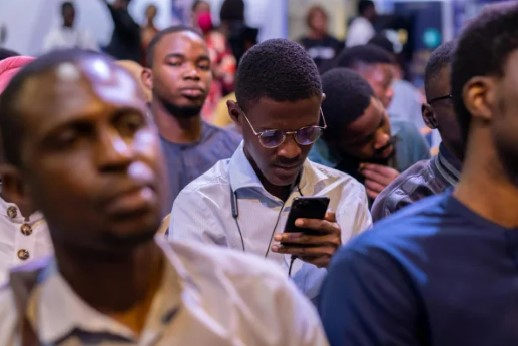
CRYPTO UNLOCKED
As businesses grew, Nigerians needed a way to accept payments globally—something that wasn’t possible with PayPal, Google Pay, or other legacy platforms. That ignited a boom in enthusiasm for cryptocurrencies and blockchain technology, one that has dwarfed awareness of crypto in the United States. In Nigeria, 90% responded that they were aware and knowledgeable about cryptocurrencies, while 71% said the same for the blockchain and 59% for NFTs. (In a November 2021 Pew Research report, only 24% of Americans said they had heard “a lot” about crypto.)
“Now you have businesses who accept payments in crypto, in stablecoins like USDC and Binance Coin,” says Odusami. But even as people began to adopt crypto for everyday goods like groceries and taxi rides, the Nigerian government’s central bank in 2021 began to restrict Bitcoin services in the country. According to a recent joint report from the Organisation for Economic Co-Operation and Development (OECD) and the United Nations, the crackdown crippled “millions of young Nigerians” who were making money from crypto trading. However, the report also suggested that some found a way to “lawfully bypass these restrictions and continue the business.” The same month, crypto exchange KuCoin reported that 33 million Nigerians had owned or traded crypto in the last half year.
According to Odusami, 20 to 30 global crypto exchanges have a presence in Nigeria and are actively targeting Nigerian customers—including Binance, which is a client of SBI Media in five African countries.
Meanwhile, the hustle has moved onto the blockchain. Odusami cites the story of a Nigerian man who created his own NFT project from photos of drummers at a traditional Nigerian wedding ceremony—a cultural rite beloved not just in dance, but also as a musical retelling of the betrotheds’ mothers and fathers through the years. The man made a killing—and returned to the ceremonial village to give the drummers 70% of the proceeds.
BIG TECH’S SWAY
According to the survey, Silicon Valley Big Tech companies (including social media) wield tremendous influence in Nigeria, with their command of the culture second only to religious institutions. It tops that of colleges and universities, as well as the government, and both Hollywood and Nollywood.
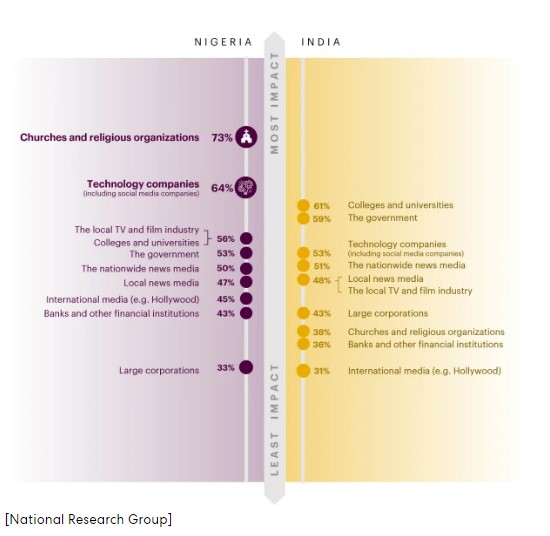
It’s perhaps no surprise that giants of crypto and social media—which have speckled reputations in the States—are viewed much more positively in Nigeria, because, as Norton explains, the impact of both technologies within the country has been overwhelmingly positive. It offers freedom of entrepreneurship and liberation from circumstances, a lifeline that keeps Nigerians afloat, and working, and connecting with the rest of the world. It might even have the power to combat corrupt governments and state overreach.
But Nigeria is young, and it will still have to fight for its place in a competitive world. “Nigeria is on the map to grow significantly over the next 10, 15, even 5 years,” says Norton. “They want to be where the future is.”
So, it hustles on.
Related
Articles
Artificial Intelligence, In the News, Marketing Frontiers, Press Releases, Stagwell Marketing Cloud, Tech
Jun 12, 2025
PRophet, a Stagwell (STGW) Company, Completes Integration of UNICEPTA, Launches Unified Brand and Enhanced Media Intelligence Offering

In the News, Marketing Frontiers, Press Releases, Stagwell Marketing Cloud, Tech
Jun 11, 2025
The Marketing Cloud Launches Cutting-Edge Platform to Simplify Marketing Workflows
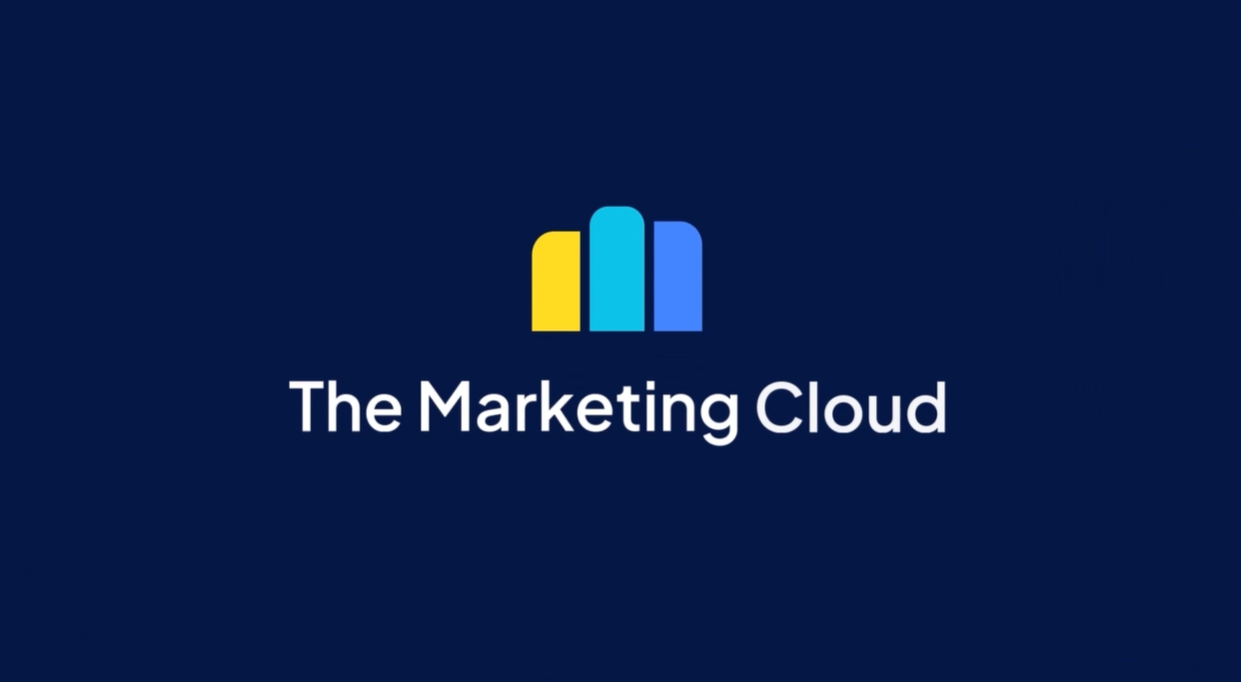
In the News, Press Releases, Thought Leadership
Jun 10, 2025
Stagwell (STGW) Chairman and CEO Mark Penn to Discuss the Irreplaceable Power of Human Creativity on the Main Stage of Cannes Lions


PORTLAND, Ore., Nov. 1, 2022 /PRNewswire/ — Instrument and Hello Design, leading digital agencies within the Stagwell (NASDAQ: STGW) network, will join forces in January 2023. Hello Design will add its 30+ employees to operate as a full-service client team within the 400+ employed at Instrument— retaining its current clients but with the support of Instrument’s organizational structure and resources.
Hello Design uses design, strategy and technology to connect people to brands in meaningful ways. The agency’s work for clients like Sonos, Nike, Tillamook, and MoMA has won numerous awards, including Cannes Cyber Lion, Clio, One Show Pencil, and Webby Awards. Instrument, a top-performing digital agency within the Stagwell network, delivers end-to-end brand experience services from digital product innovation to brand marketing. Hello Design will add complementary content capabilities, such as directing films and producing content for Facebook’s Analog Research Lab, Din Tai Fung, and Herman Miller.
Hello Founder and former CEO, David Lai, will assume the position of Executive Creative Director at Instrument. He will continue to oversee creative on key accounts. Szu Ann Chen will lead key client partnerships as Executive Director and George Lee will take the role of Director, Content Production, further evolving Instrument’s innovation capabilities to build systems that deliver content at scale with measurable results.
“We have always respected Instrument’s ability to not only do great work, but to do it at scale with some of the world’s leading brands. We are excited for this next evolution, and what the future may hold,” said David Lai, Founder & CEO at Hello Design.
“Instrument builds connected brand ecosystems across brand, product, and marketing, elevating and unifying each and every user experience.” said Kara Place, CEO at Instrument. “Hello’s multi-disciplinary expertise strengthens this approach. Having been fans and collaborators for over a decade, we’re confident and delighted for them to join our team.”
In addition, while Instrument continues to operate as a virtual-first agency, Hello Design adds a physical Los Angeles, CA location and presence for hybrid work for LA-based employees and clients.
Stagwell previously held a minority interest in Hello Design. This move brings Hello Design fully into the Stagwell family. Terms of the deal were not disclosed.
Instrument is a digital agency with offices in Portland, Oregon and Brooklyn, New York. We are a dynamic group of creative technologists and storytellers that use the power of design and technology to co-create groundbreaking work with our clients. We connect brands like never before— helping organizations reimagine the most valuable pieces of their digital ecosystem. With deep talent in the areas of Strategy, Design, Development and Content Creation, we build modern experiences for ambitious brands.
Stagwell is the challenger network built to transform marketing. We deliver scaled creative performance for the world’s most ambitious brands, connecting culture-moving creativity with leading-edge technology to harmonize the art and science of marketing. Led by entrepreneurs, our 13,000+ specialists in 34+ countries are unified under a single purpose: to drive effectiveness and improve business results for their clients. Join us at www.stagwellglobal.com.
Media Contact:
Brandon Dixon
pr@stagwellglobal.com
SOURCE Stagwell Inc.
Related
Articles
In the News, Press Releases, Thought Leadership
Jun 10, 2025
Stagwell (STGW) Chairman and CEO Mark Penn to Discuss the Irreplaceable Power of Human Creativity on the Main Stage of Cannes Lions

Events, In the News, Press Releases, Talent & Awards
Jun 05, 2025
Code and Theory Named ANA B2B Agency of the Year After Transforming the World’s Leading Brands

In the News, Press Releases, Talent & Awards
May 19, 2025
Stagwell (STGW) Appoints Connie Chan as Chief Growth Officer for Asia Pacific

Newsletter
Sign Up
NRG Releases Whitepaper, “The Power of Brand Fandom: 5 Things to Know Right Now”
NEW YORK, Oct. 31, 2022 /PRNewswire/ — Research from Stagwell‘s (NASDAQ: STGW) National Research Group (NRG), a global insights leader at the intersection of technology, content, and culture, shows more people are fans of brands, products, and services in the same way they love sports and celebrities. NRG introduced its “Brand Fandom” research focus at Advertising Week, beginning a series that will unpack the journey to fandom across key categories and audiences. The research will explore the pathways for brands to successfully build and activate a fan community and understand the modern-day fan ecosystem.
NRG’s Brand Fandom showed up in a myriad of ways this month:
- Brand Fandom Whitepaper: In a new report, “The Power of Brand Fandom: 5 Things to Know Right Now,” research points to brand influence as being more significant than other commonly associated areas of interest: consumers are bigger fans of brands or products (57%) than of celebrities (54%), movies (52%), sports (48%) or online influencers/personalities (37%). Some other key themes from the paper include:
- Age is just a number: Brand fandom is strong across all ages, dispelling conventional assumptions that Gen Z and millennials have a fleeting sense of brand loyalty.
- Fans don’t exist in a vacuum: 54% “want everyone to know” they are a fan of a given brand or product.
- Brand fans are sold on potential, too. Over three-quarters (77%) say they will at least try different products the brand comes out with.
- MediaPost Op-Ed: In a contributed piece, Stagwell Global Chief Marketing Officer Ryan Linder and NRG EVP, Brand Strategy and Innovation Fotoulla Damaskos co-bylined an article, “Bigger Than Sports and Celebrity: The Power of Brand Fandom,” which explores what brands can expect of the consumers who they turn into fans: not just deep loyalty, but advocacy.
- Advertising Week New York: A panel at AWNY, which included NRG’s Damaskos and EVP, Head of Sports Marketing Jay Kaufman; Stagwell’s Linder; Christie’s SVP, Head of Marketing Neda Whitney; and McDonald’s Director, Communications Measurement & Insights Sarah Myles, introduced brand fandom on “Buzz and Devotion: The Fan Economy That Makes Niche Mainstream in Today’s Culture.”
“This first piece of research shows how brand fandom serves as a tool of self-expression, intricately linking brands to consumer identities. It should signal to brands that interactions with customers have to be dialogues, nurturing people’s experiences and engendering a sense of shared belonging,” said NRG EVP, Brand Strategy & Innovation Fotoulla Damaskos. “Our choices as consumers are on full display right now – we can wield power against the brands that fail us, or passionately champion those we believe in. Where these choices fall can mean the difference between having customers or having fans who bring commitment, advocacy and long-term brand growth.”
“The way I move about the world – how I approach the fast-paced work of brand marketing, to the even faster-paced world of fatherhood – I’ve done through the lens of authenticity and grit, qualities I adopted from my fandom for Harley-Davidson motorcycle culture,” said Stagwell EVP, CMO Ryan Linder. “My identity continues to be reinforced by a kaleidoscope of brands I’m personally invested in, proof that the influence of brands can manifest across so many aspects of our lives.”
Data used in this report comes from a study of 1,018 US consumers, ages 18 to 65, conducted in October 2022–representative of the national population in terms of age, gender and ethnicity.
National Research Group is a leading global insights and strategy firm at the intersection of entertainment and technology. Rooted in four decades of industry expertise, the world’s leading marketers turn to us for insights into growth and strategy for any content, anywhere, on any device. Working at the confluence of content, culture and technology, NRG offers insights for bold storytellers everywhere. To learn more, please visit www.nationalresearchgroup.com, and follow us on LinkedIn and Instagram.
Stagwell is the challenger network built to transform marketing. We deliver scaled creative performance for the world’s most ambitious brands, connecting culture-moving creativity with leading-edge technology to harmonize the art and science of marketing. Led by entrepreneurs, our 13,000+ specialists in 34+ countries are unified under a single purpose: to drive effectiveness and improve business results for their clients. Join us at www.stagwellglobal.com.
Stagwell’s fastest-growing network transforms for the convergence of creative, media, and commerce.
Related
Articles
In the News, Press Releases, Thought Leadership
Jun 10, 2025
Stagwell (STGW) Chairman and CEO Mark Penn to Discuss the Irreplaceable Power of Human Creativity on the Main Stage of Cannes Lions

Events, In the News, Press Releases, Talent & Awards
Jun 05, 2025
Code and Theory Named ANA B2B Agency of the Year After Transforming the World’s Leading Brands

In the News, Press Releases, Talent & Awards
May 19, 2025
Stagwell (STGW) Appoints Connie Chan as Chief Growth Officer for Asia Pacific

Newsletter
Sign Up
By
Harris Brand Platform
CONTACT
hello@stagwellglobal.com
SIGN UP FOR OUR INSIGHTS BLASTS
A Size-Inclusive Rollout Shrinks Earnings, but Not Brand Equity
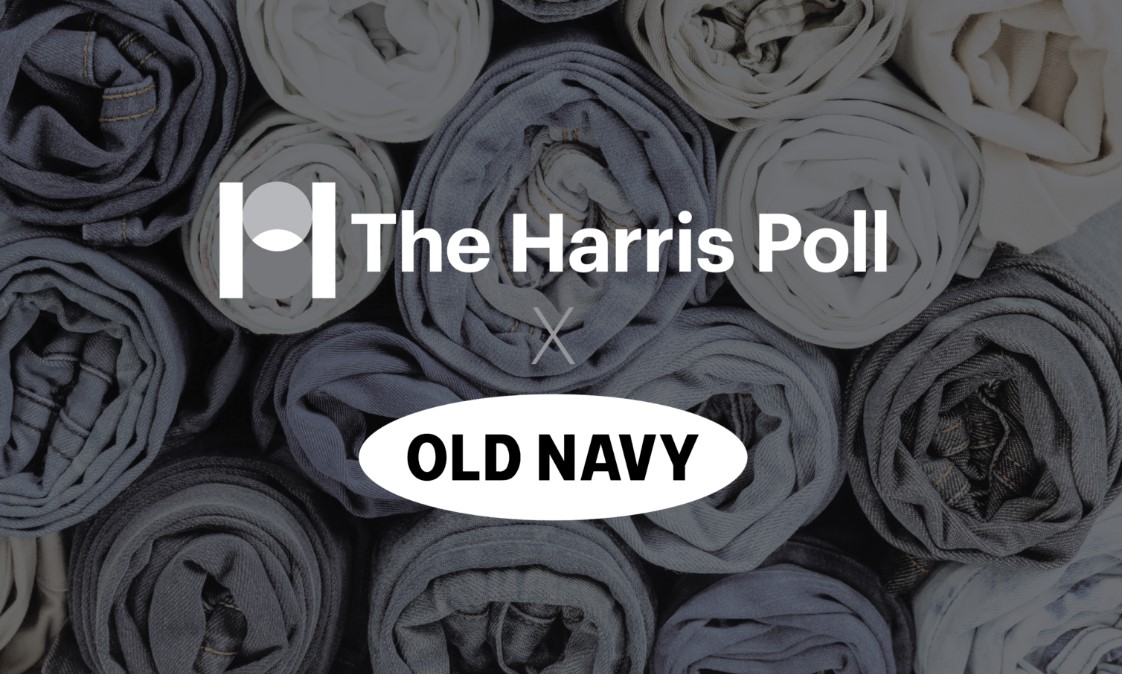
In August 2021, Old Navy launched BODEQUALITY, a campaign that expanded their clothing line to serve women sizes 00-30. Inventory mismanagement resulted in financial losses; however, Harris Brand Platform data shows that this “failure” comes with a silver lining:
- BODEQUALITY departed from the traditional women’s clothing market, with apparel specifically designed for curvy women and a strategy focused on size inclusivity.
- The right idea…Consumers familiar with the Old Navy brand appreciated BODEQUALITY’s mission, and the retailer’s brand equity hit a November high.
- …The wrong execution: Inventory mismanagement, and supply chain issues, resulted in stores overwhelmed with surpluses of the largest and smallest sizes, and a lack of their most popular mid-range sizes.
Download our case study to discover how consumers responded to Old Navy’s BODEQUALITY campaign, and how this “failure” also did the brand some good.
Related
Articles
Artificial Intelligence, In the News, Marketing Frontiers, Press Releases, Stagwell Marketing Cloud, Tech
Jun 12, 2025
PRophet, a Stagwell (STGW) Company, Completes Integration of UNICEPTA, Launches Unified Brand and Enhanced Media Intelligence Offering

In the News, Marketing Frontiers, Press Releases, Stagwell Marketing Cloud, Tech
Jun 11, 2025
The Marketing Cloud Launches Cutting-Edge Platform to Simplify Marketing Workflows

In the News, Press Releases, Thought Leadership
Jun 10, 2025
Stagwell (STGW) Chairman and CEO Mark Penn to Discuss the Irreplaceable Power of Human Creativity on the Main Stage of Cannes Lions

Newsletter
Sign Up
By: Ray Day
CONTACT:
We wanted to share our latest consumer and business insights, based on research from The Harris Poll, a Stagwell agency.
Among the highlights of wave 139 (fielded Oct. 21-Oct. 23) in our weekly consumer sentiment tracking:
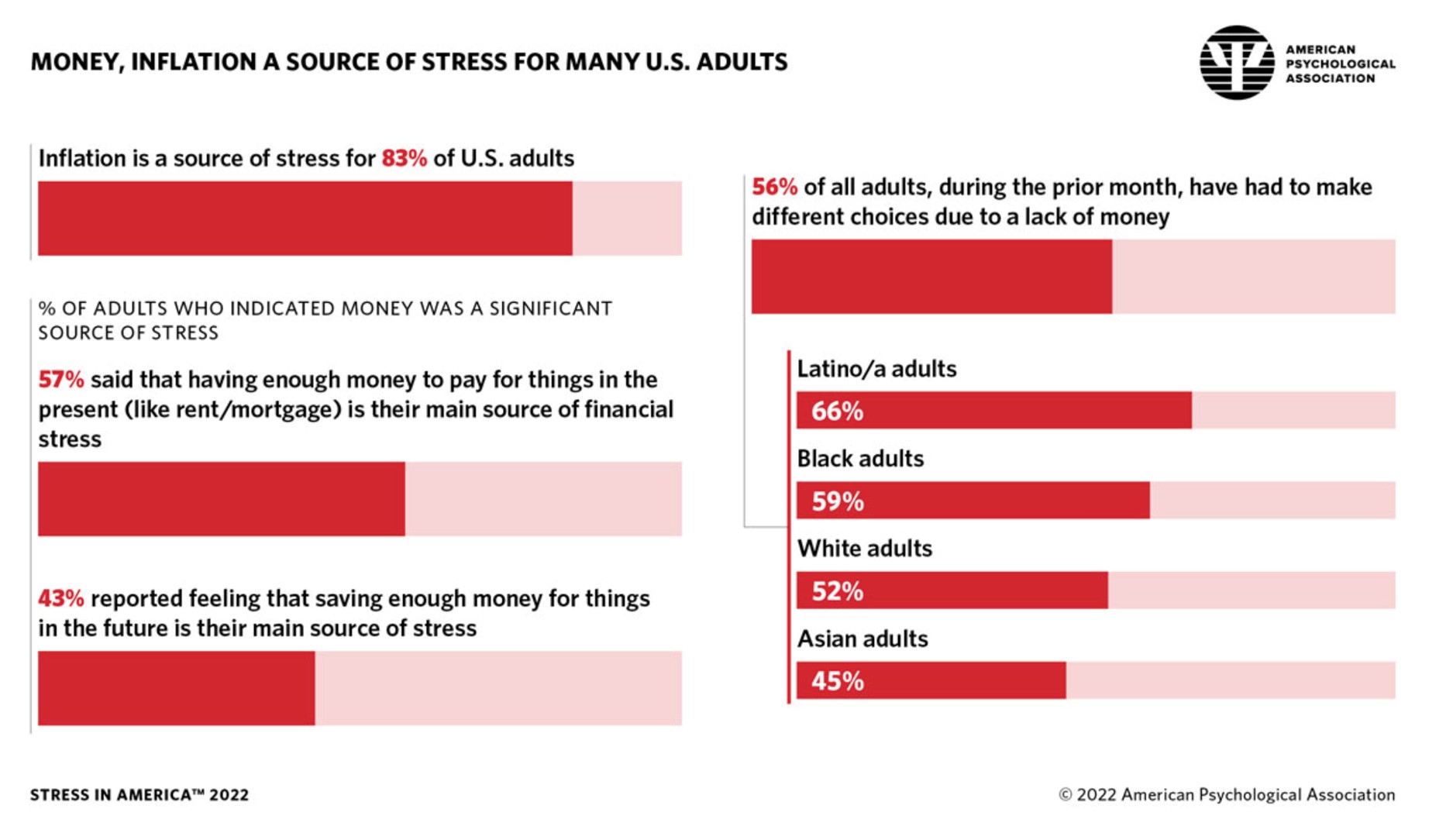
ECONOMY, INFLATION WORRIES REMAIN STEADY:
Today, 89% of Americans are concerned about the economy, inflation and jobs – the same high level as last week.
-
- 85% worry about a potential U.S. recession (no change)
- 82% about U.S. crime rates (down 1 point)
- 75% about political divisiveness (up 1 point)
- 74% about the War on Ukraine (no change)
- 72% about affording their living expenses (down 1 point)
- 61% about a new COVID-19 variant (up 1 point)
- 47% about losing their jobs (no change)
- 44% about the Monkeypox outbreak (down 4 points)
INFLATION IS AMERICA’S #1 STRESSOR:
How stressed are Americans, and what’s causing it? The answers are clear in the 2022 Stress in America survey we conducted with the American Psychological Association.
-
- 27% of Americans report being so stressed that they cannot function most days.
- Inflation is the #1 stressor for 83% of adults. That is followed by violence and crime (75%), the current political climate (66%) and the racial climate (62%).
- 76% say the future of the nation is a significant source of stress in their lives.
- 68% say this is the lowest point in our nation’s history that they can remember.
- 57% who indicated money was a worry said that having enough money to pay for things like food or rent/mortgage is their main source of stress.
- 43% reported feeling that saving enough money for things in the future is their main source of stress.
- 56% agreed that they and/or their family have had to make different choices due to lack of money in the past month, with Latino/a (66%) and Black Americans (59%) reporting this at a higher level than White (52%) and Asian (45%) American adults.
EMPLOYEES WARMING UP TO BACK-TO-OFFICE:
As we continue tracking return-to-office requirements, a majority of employees still say they will jump jobs if forced back to the office full-time. Yet the numbers of workers resisting return-to-office are much lower than three months ago, based on our survey with USA Today.
-
- 57% of employed Americans say companies will lose employees if they require workers to be in-person (down 9 points from June).
- 73% of remote and hybrid workers say they would find another remote or hybrid job if their company forced them to work from the office full-time (down 5 points from June).
- In an earlier study with Bloomberg, 57% of workers said they believe that employers now have more power in the job market (a 5-point increase in favor of employers from January).
INFLUENCERS MATTER:
Nearly half of U.S. consumers consider input from influencers when purchasing a product or service – especially younger people, according to our survey with AdAge.
-
- 80% of Gen Z consult user reviews before purchasing, and 75% say that recommendations from influencers affect their decision – nearly double the general population at 43%.
- 40% of Gen Z members have made purchases directly through an influencer’s storefront on sites like Amazon and LTK.
- 73% also report looking to TikTok creators for product input, with Instagram and YouTube influences being similarly popular choices.
BRANDS GETTING GEN Z RIGHT:
Beats by Dre, Jersey Mike’s Subs, Planned Parenthood, Lenovo and New Balance are doing the right things to capture the attention of Gen Z, according to the latest Ad Age-Harris Poll Gen Z brand tracker, a ranking of brands gaining the most attention from Gen Z members ages 18-24 in the third quarter.
-
- Also doing better with Gen Z are Kickstarter, Impossible Foods, Coach, Flex Seal, Foot Locker, Pillsbury, Haagen-Dazs, Bose, Nature Valley, North Face, Crocs, NHL, Paramount, Fiji and State Farm.
- See full details here.
ICYMI:
In case you missed it, check out some of the thought-leadership and happenings around Stagwell making news:
As always, if helpful, we would be happy to provide more info on any of these data or insights. Please do not hesitate to reach out.
Thank you.
Related
Articles
In the News, Press Releases, Thought Leadership
Jun 10, 2025
Stagwell (STGW) Chairman and CEO Mark Penn to Discuss the Irreplaceable Power of Human Creativity on the Main Stage of Cannes Lions

Events, In the News, Press Releases, Talent & Awards
Jun 05, 2025
Code and Theory Named ANA B2B Agency of the Year After Transforming the World’s Leading Brands

In the News, Press Releases, Talent & Awards
May 19, 2025
Stagwell (STGW) Appoints Connie Chan as Chief Growth Officer for Asia Pacific

Newsletter
Sign Up
By
By: Lindsay Hong, COO, Locaria
Originally Released on
Little Black Book
CONTACT
hello@stagwellglobal.com
SIGN UP FOR OUR INSIGHTS BLASTS
Locaria’s Hong on bringing the previously siloed skills sets of creative production, adaptation and localisation together
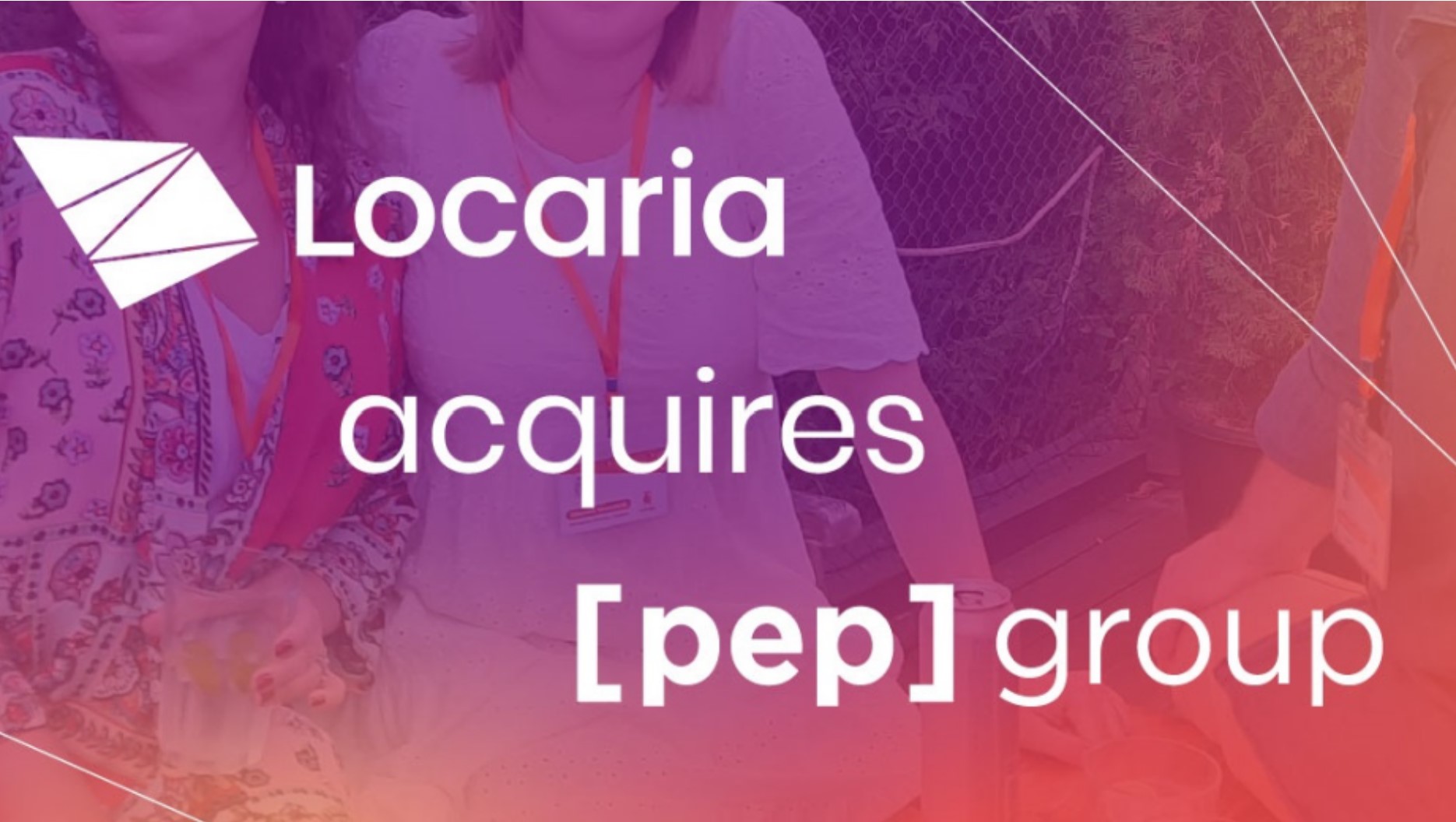
It has been an exciting first three months since we closed on our deal to acquire PEP Group. During this time we have forged new relationships, taken our news out to market and started to see how our combination is delivering better solutions for brands with international ambition. As we begin to plan for 2023, now is a good moment to reflect on what we have learned so far.
In response to the challenge of global content fragmentation that brands have been facing, our vision was to bring together the previously siloed skills sets of creative production, adaptation and localisation, to create a unified global content scaling solution. Using international talent, workflows and systems, we aim to help brands iterate out great marketing campaigns for any channel, market and language, in an efficient and effective manner. So how are we bringing this vision to life?
A core consideration throughout the acquisition process was to ensure continuity and assurance for both teams. We knew that to do that, we needed a fantastic exec team that could unite behind a shared vision. Having explored each other’s questions face-to-face, we secured our joint commitment to delivering a smooth transition for our teams. This evolved into a well-prepared internal and external comms plan, built around that vision: a better way to serve clients as they expand globally. We backed this up with a logical organisational structure with leading roles for senior members of both organisations, empowered to take the vision forward. This has allowed us to effectively respond to staff queries and commence several workstreams, bringing together talent and leadership from both companies, with positive progress already being made.
1. Communication, culture and values
There was already a good cultural fit between the two companies, with our two sets of values sharing a lot of similar vocabulary. We have now iterated out the values to be shared across the entire organisation, and more importantly, operationalised through day-to-day processes such as performance management, hiring, client support and sales. We look forward to launching these formally in the next month. Inevitably there are also divergences in culture values, and understanding. What has been great to see is a high level of transparency and shared responsibility in building a unified team. This has driven a common purpose and collaboration across all teams.
2. Go-to-market Strategy
As the transaction was highly complementary in nature, adding creative adaptation & production to our existing services, the narrative was straightforward. This allowed us to quickly upskill sales resources in both teams to begin speaking to clients and partners as soon as the deal closed. In addition, having a full suite of marketing content localisation and production services has allowed us to support RFPs in partnership with Stagwell creative agencies in a more robust way, leading to wins for the wider network through our efficient post-production services. We have also already opened up SEO and transcreation opportunities with global FMCG brands.
In terms of footprint and client support, the transaction has allowed Locaria to extend its presence in the Americas, adding a team Canada available to support local clients in-market across not only production, but also language services.
3. Innovation
As we have been working together to evolve our proposition and go-to-market strategy, we have increasingly noticed similar challenges coming from clients across all areas of the business. Common themes surrounding the need for nuanced content strategies that can scale internationally but keep budgets in check have emerged. The role of AI, automation and tech in both brand and direct response content is something we find all our clients looking for advice on, as is the fine balance between performance and creativity. The evolution of creative production solutions is following a similar pattern to that of language tech in the past ten years. This means our combined experience is able to identify areas for innovation and increased insight, both in terms of our internal processes and client strategies. Our complementary skills are also informing the development of more solutions to support content performance.
4. Brand & Marketing
We have found it important to be respectful of each other’s brands and to make clear decisions on how to align going forwards. Pre-transaction, we identified that due to our different histories, lead generation models and footprints, Locaria had greater brand awareness and more marketing collateral. However PEP, being focused around highly visual media, brought different channels and options for sharing our brand and proposition. As such, our strategy was to launch an updated visual identity for PEP at the time of the transaction, bringing the brand into the broader Locaria group aesthetic and tone of voice. This has been followed by a process to consolidate marketing efforts across social media under the Locaria brand. The social integration is setting the tone for an imminent new version of locaria.com, showcasing creative adaptation and production case studies and explaining all the services and expertise now available to clients as a result of the acquisition. We can also do all our own marketing production in-house now, which is very satisfying!
Reflecting back, there are several key integration principles which have served us well so far and will continue to inform how we grow together as one business:
• Keep the vision central and repeat it again and again. Ensure all decisions speak to that singular vision
• Look after people. Talent is at the centre of everything we offer clients, and also what makes Locaria a great place to work. Supporting our team through the journey to realising our vision will ensure success, and make it fun along the way!
• Make incremental changes where possible to smooth integration. Make small changes quickly, learn and iterate to reduce unnecessary disruption and remain agile
• Walk the talk- use each other’s services from day one. By using each other’s services internally, we get to know each other better and work out the kinks more quickly. Mutual trust will show through when sharing our services with clients
We have made a fantastic start together and are now entering a phase of increasingly detailed, operational work. As we move forward at pace, we will allow time where it is required to ensure our new organisation is fit for purpose and maintains the high quality standards that Locaria is known for. From the positive foundation of the last 100 days, we are confident that as one team, desiloing production and localisation, we will continue to deliver a bright future for us and our clients.
Related
Articles
Artificial Intelligence, In the News, Marketing Frontiers, Press Releases, Stagwell Marketing Cloud, Tech
Jun 12, 2025
PRophet, a Stagwell (STGW) Company, Completes Integration of UNICEPTA, Launches Unified Brand and Enhanced Media Intelligence Offering

In the News, Marketing Frontiers, Press Releases, Stagwell Marketing Cloud, Tech
Jun 11, 2025
The Marketing Cloud Launches Cutting-Edge Platform to Simplify Marketing Workflows

In the News, Press Releases, Thought Leadership
Jun 10, 2025
Stagwell (STGW) Chairman and CEO Mark Penn to Discuss the Irreplaceable Power of Human Creativity on the Main Stage of Cannes Lions

Newsletter
Sign Up
By
By: Maggie Malek, CEO, MMI Agency
Originally Released on
The Marketing Insider
CONTACT
hello@stagwellglobal.com
SIGN UP FOR OUR INSIGHTS BLASTS
One of the great loves of my life (and one of my best kept secrets — until now) is gaming.
I have spent so much time online playing games, but it’s something I never talk about. Why? Maybe it’s because I’m a woman. Maybe it’s because I’m a CEO. Maybe I’m afraid I won’t be taken seriously.
But that time is past. It is now time for me to “step out of the shadows,” especially as an advocate for women in advertising, marketing and business in general, because now there is a particularly compelling reason to discuss it.

Thinking like a gamer is a superpower. Considering all the talk about gaming around us, the ability to understand that storytelling environment — or, how to “think like a gamer” — is an enormous asset. It’s estimated the global gaming market will amount to $268 billion annually in 2025. The opportunities for brands in this space are nearly limitless.
Using gaming to engage and convert. You can’t change hearts and minds with a big idea alone. Connecting and converting the modern consumer is all about meeting them where they are, in the thick of the customer journey, where multiple touchpoints build a lasting connection with your brand. It is that point where gaming can be… well, a game-changer.
As an audience segment for advertisers, gaming has been somewhat on the fringe. Brands and advertisers have generally not understood how to engage. As the space becomes more mainstream, though, opportunities for brands that are willing to explore are growing.
Successful campaigns start where brand followers are consuming content online.
That is where we should be telling stories. And we know gamers have active audiences that drive conversion. Gaming truly is the convergence of performance and possibility.
Gaming is only getting bigger. As marketers, though, we’ve really only scratched the surface; gaming is now everywhere. Women make up 45% of gamers in the U.S., which has been the case for a decade. The average age of gamers is 31, and 80% of all gamers are over the age of 18. According to Nielsen, 58% of the total U.S. population in 2013 were gamers. Today, it’s grown to 72%.
The opportunity for brands to create content for this massive (and growing) audience, then, is incredible, and it’s particularly exciting to see these possibilities opening up in the industry I love.
A lifelong gamer. From growing up battling my dad on our PC with Star Wars race games and Lemmings, to my first Game Boy, to my limited edition blue Sega Genesis, I have always been playing. Today, I’ve graduated to an array of games, from my Nintendo Switch to PokemonGO on my phone — and can we talk about how Edith Finch is the most beautiful game of all time!?
In fact, I run a Discord group for gamers, because we wanted to make sure there was a positive (no trolls allowed) corner of the internet for people to go. That group and its members were already a happy place for me, and then when I later got to meet the Discord team at a Stagwell SXSW event… major fan girl moment!
What’s next?
It’s practically a fait accompli that, moving forward, gaming is going to be a part of brands’ advertising media mix. Brands need to explore partnerships from in-game product placement to sponsoring gaming influencers, and partnering with all the social networks that focus on gaming.
No matter the story you are trying to tell, it’s now increasingly likely that a portion of your audience is spending time with gaming communities online. If you aren’t creating content there, you are missing out on rich engagement.
Gaming is the evolution of influencer marketing; it’s the evolution of CTV and display networks, of VR. And it’s the next stage of the industry we’re in. As the conversation on opportunities for branded content in games grows and evolves, brands will benefit from working with agencies that actually understand the space.
Related
Articles
Artificial Intelligence, In the News, Marketing Frontiers, Press Releases, Stagwell Marketing Cloud, Tech
Jun 12, 2025
PRophet, a Stagwell (STGW) Company, Completes Integration of UNICEPTA, Launches Unified Brand and Enhanced Media Intelligence Offering

In the News, Marketing Frontiers, Press Releases, Stagwell Marketing Cloud, Tech
Jun 11, 2025
The Marketing Cloud Launches Cutting-Edge Platform to Simplify Marketing Workflows

In the News, Press Releases, Thought Leadership
Jun 10, 2025
Stagwell (STGW) Chairman and CEO Mark Penn to Discuss the Irreplaceable Power of Human Creativity on the Main Stage of Cannes Lions


